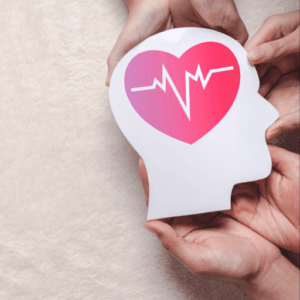Love goes beyond feelings—it actually alters your brain physically
The Architecture of Love goes beyond fleeting emotions—it is a transformative force that reshapes our brains and strengthens our connections with others. Whether through romantic relationships, deep friendships, or family bonds, human interactions play a crucial role in rewiring our neural pathways. These connections foster emotional resilience, enhance cognitive function, and promote overall well-being. By understanding how love influences the brain, we can appreciate its profound impact on our mental and emotional health.
Neuroscience reveals that love and connection stimulate brain plasticity, allowing our minds to adapt and grow.Oxytocin, also referred to as the “bonding hormone,” bolsters relationships by boosting trust and nurturing emotional security. Simultaneously, mirror neurons empower us to empathize and form deeper connections with others.
The Architecture of Love is not just about emotions—it is a neurological blueprint that shapes our thoughts, behaviours, and interactions, ultimately guiding us toward greater fulfilment and psychological well-being.
The Neuroscience of Love
Neuroscientists have long studied how love and relationships affect brain function. When we engage in deep connections with others, our brains release chemicals like oxytocin, dopamine, and serotonin. These chemical messengers have important functions in forming connections, faith, and enjoyment, highlighting the importance of human connections.
The Architecture of Love ensures that these brain chemicals work together to build emotional resilience and stability.
Oxytocin: The Love Hormone
Oxytocin, often referred to as the “bonding hormone,” is released during close interactions, such as a heartfelt hug or an engaging conversation, fostering connection. This hormone enhances emotional bonds and fosters feelings of security and inclusion. Research indicates that oxytocin may alleviate stress and anxiety, highlighting the importance of social interactions in emotional management. The Architecture of Love relies on oxytocin to reinforce deep human connections.
Dopamine: The Reward System
Dopamine is the neurotransmitter associated with pleasure and reward. When we fall in love or experience positive social interactions, dopamine floods the brain, reinforcing behaviours that strengthen relationships. This mechanism elucidates why love and companionship are experienced as highly rewarding and motivating. The neural circuits responsible for love rely on dopamine to establish enduring connections and achieve emotional contentment.
Serotonin: Mood and Stability
Serotonin helps regulate mood and emotional stability. Secure and healthy relationships contribute to increased serotonin levels, reducing the risk of depression and promoting long-term mental well-being. The Architecture of Love ensures a stable emotional foundation, driven by serotonin’s effects on the brain.
How Relationships Reshape Neural Pathways
Neural plasticity, or the brain’s ability to reorganize itself, is heavily influenced by relationships. Every exchange we engage in enhances specific neural pathways while diminishing others. The Architecture of Love plays a crucial role in shaping these connections.
Emotional Resilience and Stress Reduction
Strong social bonds help regulate the amygdala, the brain region responsible for processing fear and stress. Positive relationships provide emotional support, which reduces cortisol levels (the stress hormone) and enhances our ability to cope with challenges. A real-life example of this can be seen in long-term couples or close friendships—studies have shown that holding a loved one’s hand during stressful situations can significantly lower stress responses in the brain. For instance, a study on married couples found that when a partner held their spouse’s hand during moments of fear or anxiety, their brain exhibited reduced amygdala activation, demonstrating the calming power of connection. The Architecture of Love enhances emotional resilience through strong interpersonal bonds.
Empathy and Mirror Neurons
Our ability to understand and share the emotions of others is largely due to mirror neurons. These unique brain cells activate both when we carry out an action and when we watch someone else perform it. Healthy relationships strengthen our mirror neuron system, increasing empathy and deepening our emotional connections. A real-life example of this can be seen in parents and infants—when a baby smiles, the parent instinctively smiles back, activating mirror neurons and reinforcing emotional bonding. Similarly, in friendships and romantic relationships, observing a loved one’s emotions and responding with empathy strengthens social bonds. The neuroscience of love and empathy illustrates how the Architecture of Love enhances human interactions.
Memory and Cognitive Function
Love and connection enhance cognitive abilities. Social interactions stimulate the hippocampus, the brain region responsible for memory formation and learning. People in strong, supportive relationships often show better memory retention and lower risks of cognitive decline. A well-documented example is found in elderly couples—research has shown that those in long-term, loving relationships tend to experience slower cognitive decline compared to individuals who are socially isolated. Additionally, studies on individuals with strong social networks suggest they have a lower risk of developing dementia, highlighting the role of interpersonal connections in maintaining brain health. The framework of love guarantees that relationships are crucial to cognitive function and lifelong learning.
Healthy Relationships for a Stronger Brain
Love is not just a feeling—it’s an active practice that shapes our brains and strengthens our relationships. The Architecture of Love thrives when we intentionally nurture our connections, reinforcing emotional security, cognitive function, and overall well-being. Here’s how you can make love an enriching force in your life:

Practice Active Listening:
Conversations are more than just words; they build understanding and trust. When you truly listen—without distractions or the urge to respond immediately—you strengthen the neural pathways related to empathy. Imagine a couple working through a disagreement. Instead of reacting defensively, one partner fully listens, acknowledges feelings, and responds thoughtfully. This practice deepens their bond, showing how the Architecture of Love relies on deep listening.
Express Gratitude:
Recognizing a loved one’s efforts, whether through a sincere “thank you” or a thoughtful note, reinforces positive neural pathways in the brain and deepens emotional connections. Consider a child who receives encouragement from a parent or a friend who feels valued after receiving appreciation—it’s these moments that solidify emotional security. Emotional connection in relationships plays a key role in love’s effects on the brain.
Prioritize Emotional Availability:
Imagine a friend who always checks their phone during conversations versus one who makes eye contact and is fully present. Which interaction feels more meaningful? Being emotionally available means giving undivided attention, creating a space where loved ones feel heard and valued. The Architecture of Love depends on presence, not just proximity.
Engage in Shared Activities:
Love flourishes through shared experiences. Think about grandparents teaching their grandchildren how to bake, couples exploring new destinations together, or friends bonding over a fitness goal. These activities strengthen emotional ties while stimulating neural pathways associated with joy and memory retention. Love and brain function improve with positive shared moments.
Encourage Open Communication:
Vulnerability is the foundation of trust. A couple who openly discusses fears, dreams, and frustrations builds emotional stability over time. Honest conversations—especially during tough times—reinforce the psychology of love and connection, making the Architecture of Love stronger with each shared truth.
Manage Conflicts Constructively:
Disagreements happen, but how we handle them defines our relationships. Instead of shutting down or escalating anger, approaching conflicts with empathy and problem-solving strengthens relational resilience. Think of a long-term friendship that survived a falling out because both individuals chose understanding over resentment. The Architecture of Love grows through constructive resolution.
Foster Physical Affection:
A hug from a parent, holding hands with a partner, or a reassuring pat on the back—these simple touches release oxytocin, reinforcing trust and emotional security. Studies have shown that children who experience consistent physical affection develop stronger emotional resilience as adults. Love and mental well-being are deeply linked to physical closeness.
Support Each Other’s Growth:
Love isn’t about standing still; it’s about evolving together. Whether it’s celebrating a partner’s career milestone, cheering on a friend’s fitness journey, or encouraging a child’s creative pursuits, mutual support strengthens the foundation of love. The Architecture of Love is not just about being together but growing together.
By practicing these habits, we reinforce the Architecture of Love in our lives, shaping our brains and relationships for the better. Love is not just something we feel—it’s something we actively build.
The Architecture of Love is not just a fleeting emotion; it is a fundamental force that rewires our brains and shapes our experiences. By fostering healthy relationships, we actively participate in the neuroscience of love and connection, paving the way for emotional resilience, cognitive strength, and overall well-being. So, nurture your connections—they are sculpting your brain in ways that define who you are and how you thrive. The psychology of love, brain chemistry of relationships, and neural pathways in love all illustrate the profound impact of human connection on mental health and well-being.
Disclaimer:
This content is for informational purposes only and not a substitute for professional advice.
What’s Next?
Did this article change how you view relationships and the brain?
Share your thoughts in the comments below!
🔗 Explore More: How Emotional Intelligence Affects Mental Health .

